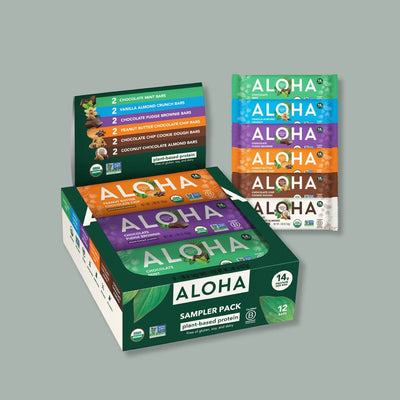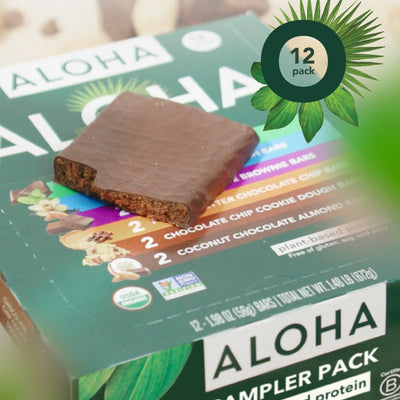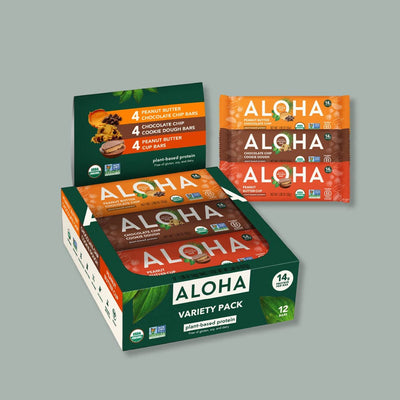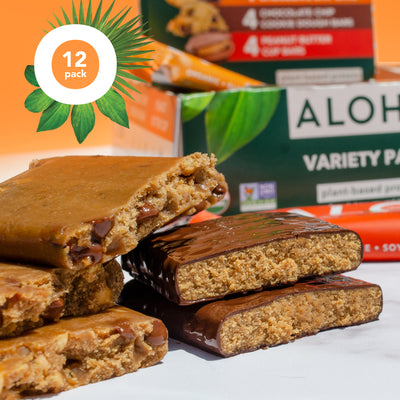Definition: Proteins are essential nutrients made of amino acids, the building blocks of life. They support muscle repair, immune function, and overall health.
- Complete Proteins: Contain all nine essential amino acids (e.g., eggs, quinoa, soy).
-
Incomplete Proteins: Lack of one or more essential amino acids (e.g., nuts, grains, legumes).
Science:
Amino Acids: Nine essential amino acids must be obtained from the diet. Complete proteins provide all nine in one food, while incomplete proteins require combinations to form a full profile.
Examples:
Complete Proteins
- Animal-based: Eggs, fish, poultry.
-
Plant-based: Quinoa, soy, chia seeds.
Complementary Incomplete Proteins
- Rice + beans.
- Whole-grain bread + peanut butter.
Fun Fact: Did you know quinoa, often called a “superfood grain,” is a seed? It’s one of the few plant-based complete proteins, making it a favorite for plant-based eaters worldwide!
Key Takeaways:
- Complete Proteins Provide All Essential Amino Acids: Complete proteins, such as quinoa, soy, and eggs, provide all nine essential amino acids, which are crucial for muscle repair and overall health.
- Combine Incomplete Proteins for Balance: Foods like beans and rice or peanut butter and whole-grain bread complement each other to form a complete protein, ensuring a balanced amino acid intake.
- Plant-Based Protein Sources Are Effective: Plant-based sources of complete proteins, like amaranth, chia seeds, and spirulina, offer sustainable and nutrient-rich alternatives to animal products.
What Are Proteins And Why Are They Important?
Proteins are essential macronutrients composed of amino acids, often called the building blocks of life. These molecules are involved in nearly every biological process, from repairing tissues and building muscle to producing vital enzymes and hormones. Without sufficient protein, the body struggles to maintain its structural and functional integrity, leading to weakened immunity, fatigue, and poor recovery from physical activities.
In addition to maintaining bodily functions, proteins are a crucial energy source, especially when carbohydrates are unavailable. They support healthy skin, hair, and nails while ensuring the proper functioning of organs and systems. For health-conscious individuals, the quality and type of protein consumed can significantly impact their overall health, making understanding the differences between complete and incomplete proteins is critical.
Understanding Complete Proteins
Complete proteins contain all nine essential amino acids that the body cannot produce on its own. These amino acids are crucial for various bodily functions, including muscle repair, immune support, and the production of enzymes and hormones. Foods like meat, poultry, fish, eggs, and dairy products are traditional sources of complete proteins, making them staples in many diets worldwide.
For individuals following a plant-based lifestyle, complete proteins can also be found in certain non-animal sources like quinoa, soy, chia seeds, and amaranth. These options provide the same amino acid benefits while aligning with organic, non-GMO, and sustainable dietary preferences. Including complete proteins in your meals ensures your body receives a balanced profile of nutrients, promoting overall health and vitality.
What Are Incomplete Proteins?
Incomplete proteins are protein sources lacking one or more of the body's nine essential amino acids. While they still provide essential nutrients, their amino acid profiles are not as balanced as complete proteins. Common examples of incomplete protein sources include most grains, nuts, seeds, and legumes.
These proteins can still play a vital role in a healthy diet, especially when combined with other foods, to create a complete amino acid profile. For instance, pairing rice with beans or peanut butter with whole-grain bread can complement their amino acid content, forming a complete protein. Understanding how to balance incomplete proteins is particularly important for individuals focusing on plant-based or vegetarian diets.
Key Differences Between Complete And Incomplete Proteins
The primary difference between complete and incomplete proteins is their amino acid profiles. Complete proteins provide all nine essential amino acids in adequate amounts, making them a more efficient source for the body’s needs. These proteins are typically found in animal products like eggs, meat, and dairy and select plant-based foods like quinoa and soy.
In contrast, incomplete proteins lack one or more essential amino acids, which means they need to be paired with complementary protein sources to achieve a balanced amino acid profile. Foods like nuts, seeds, grains, and legumes fall into this category. While both types of proteins can support a healthy diet, the choice between complete and incomplete proteins often depends on individual dietary preferences, such as plant-based or omnivorous eating patterns, and the nutritional goals of the individual.
How To Combine Incomplete Proteins For A Balanced Diet
Combining incomplete proteins is a simple yet effective way to ensure you meet your essential amino acid needs, especially on a plant-based diet. By pairing complementary protein sources, you can create a full amino acid profile, mimicking the benefits of complete proteins. Here’s how you can achieve this through thoughtful meal planning:
The Concept Of Complementary Proteins
Complementary proteins involve pairing two or more foods that provide all nine essential amino acids when combined. For example, rice and beans work together to form a complete protein because each compensates for the amino acids missing in the other. This concept allows plant-based eaters to enjoy diverse, nutrient-rich meals while maintaining proper protein intake.
Examples Of Plant-Based Combinations
Common combinations of incomplete proteins include whole grains and legumes, such as quinoa and lentils, or wheat bread and peanut butter. Another popular pairing is hummus with whole-grain pita bread, which combines chickpeas and grains. These combinations improve the amino acid profile and add variety and flavor to your diet.
Practical Tips For Balanced Meals
To easily incorporate complementary proteins into your diet, focus on combining foods naturally eaten together. Stir-fries with tofu and rice, soups with lentils and barley, or snacks like nuts with whole-grain crackers are great options. You can ensure nutritional balance by including various protein-rich plant-based foods in your meals without relying solely on complete protein sources.
Benefits Of Choosing Complete Proteins In Your Diet
Incorporating complete proteins into your diet provides significant advantages for maintaining optimal health. These protein sources simplify meal planning by offering all essential amino acids in one food, ensuring your body gets what it needs for growth, repair, and overall functionality. Here’s why complete proteins are particularly beneficial:
Supports Muscle Growth And Recovery
Complete proteins are vital for muscle development and repair, making them a go-to choice for athletes and fitness enthusiasts. After physical activity, foods like eggs, fish, and tofu deliver all the essential amino acids necessary for rebuilding muscle tissues. This can enhance performance, recovery time, and overall strength.
Promotes Efficient Body Functioning
Since complete proteins provide all essential amino acids in one source, they contribute to efficient enzyme and hormone production. This supports processes like digestion, metabolism, and immune responses. By including complete proteins in your meals, you can help your body operate at its best without combining multiple foods.
Enhances Energy Levels And Endurance
Complete proteins play a crucial role in sustaining energy levels throughout the day. Amino acids from these proteins help maintain blood sugar balance and fuel physical activity, making them ideal for active individuals. Foods like soy-based options or lean meats provide lasting energy without heavy reliance on carbohydrates.
Boosts Immune System Strength
Many amino acids in complete proteins are essential for immune function. They contribute to producing antibodies, which are crucial for fighting illnesses and infections. Regularly consuming complete proteins can help strengthen your body’s natural defenses.
Simplifies Dietary Planning
For those with busy lifestyles, complete proteins offer a convenient way to meet dietary needs without extensive meal preparation. A single serving of quinoa, a complete plant-based protein, or an egg provides a quick, balanced option. This simplicity especially benefits individuals focused on maintaining a healthy, sustainable, and hassle-free diet.
Plant-Based Sources Of Complete Proteins
For those following a plant-based lifestyle, finding complete protein sources is crucial for meeting nutritional needs without relying on animal products. Several plant-based foods provide all nine essential amino acids in one serving. Here are some excellent options to consider:
Quinoa: The Superfood Grain
Quinoa is often celebrated as a complete protein and a versatile meal addition. It contains all essential amino acids while being rich in fiber, iron, and magnesium. Whether used in salads, soups, or as a side dish, quinoa provides a nutrient-dense, non-GMO option for plant-based eaters.
Soy Products: Protein Powerhouses
Soy-based foods like tofu, tempeh, and edamame are among the most popular plant-based sources of complete proteins. They offer a full amino acid profile and provide additional nutrients like calcium and iron. When blended with soy milk, these options are perfect for stir-fries, snacks, or even smoothies.
Chia Seeds: Tiny Nutritional Giants
Chia seeds pack a powerful punch with protein content and high omega-3 fatty acids. These small seeds can be added to smoothies, oatmeal, or puddings for a protein boost. They’re great for health-conscious individuals looking to incorporate organic, plant-based options.
Amaranth: A Gluten-Free Alternative
Amaranth is another ancient grain that stands out as a complete protein. Its nutty flavor and nutritional benefits make it an excellent substitute for traditional grains like rice or wheat. With high protein, fiber, and antioxidants, amaranth is a top pick for those seeking variety in their meals.
Spirulina: The Superfood Algae
Spirulina, a blue-green algae, is a highly concentrated source of complete protein. It also provides a wealth of vitamins, minerals, and antioxidants, making it a superfood for boosting energy and supporting overall health. Often consumed in powder form, spirulina can be mixed into smoothies or sprinkled on salads.
Hemp Seeds: Packed With Protein And Healthy Fats
Hemp seeds are a complete protein source rich in omega-3 and omega-6 fatty acids, making them excellent for heart health. They are easy to incorporate into meals, whether sprinkled on salads, added to smoothies, or blended into protein powders. Hemp seeds are also great for those seeking non-GMO and organic options.
Buckwheat: A Nutritious Pseudograin
Despite its name, buckwheat is not a grain but a seed and an excellent protein source. Buckwheat is gluten-free and nutrient-dense, often used in dishes like soba noodles, pancakes, or porridge. Its high protein and fiber content make it ideal for supporting digestion and maintaining energy levels.
Nutritional Yeast: A Savory, Protein-Rich Topping
Nutritional yeast is a favorite among vegans for its cheesy flavor and complete protein profile. It’s rich in B vitamins and can be sprinkled on popcorn, pasta, or vegetables to boost flavor and nutrition. Its ease of use and nutrient density make it a must-have in plant-based diets.
Read also:
- Plant Based Diet vs. Vegan
- Vegan Diet For Weight Loss: How It Can Help Shed Pounds
- Mediterranean Diet vs. Vegan
Frequently Asked Questions About Complete Vs Incomplete Proteins
What are examples of complete proteins in a vegetarian diet?
Vegetarian complete proteins include quinoa, chia seeds, hemp seeds, and soy products like tofu and edamame. These foods provide all nine essential amino acids.
Are incomplete proteins less healthy than complete proteins?
No, incomplete proteins are not less healthy. They need to be combined with other protein sources to provide all essential amino acids. However, they can still form part of a balanced and nutritious diet.
Do I need to eat complete proteins in every meal?
Eating complete proteins in every meal is unnecessary as long as your overall daily intake includes all essential amino acids. The body can pool amino acids from various foods consumed throughout the day.
What are some quick meal ideas using complete proteins?
A quinoa salad with vegetables, tofu stir-fry, or a smoothie with soy milk and chia seeds are easy options. These meals are nutrient-dense and ideal for busy individuals.
Can I get enough complete proteins on a vegan diet?
Yes, a vegan diet can provide enough complete proteins with careful planning. Foods like quinoa, soy products, and amaranth can help meet protein requirements.
How do animal-based and plant-based complete proteins differ?
Animal-based proteins generally come with saturated fats and cholesterol, while plant-based options are higher in fiber and free from animal fats. Both are excellent sources of amino acids.
Why are amino acids important for the body?
Amino acids are the building blocks of protein and are crucial for muscle repair, hormone production, and enzyme function. Essential amino acids must be obtained through diet.
Are protein supplements necessary for a balanced diet?
Most people can meet their protein needs through a well-balanced diet. Protein supplements may be helpful for those with higher protein demands, like athletes or those with dietary restrictions.
Do incomplete proteins have any unique benefits?
Yes, incomplete proteins often contain other nutrients like fiber, vitamins, and minerals. For example, legumes are rich in iron and folate, making them valuable dietary additions.
How do protein needs change with age?
Protein needs generally increase with age due to muscle maintenance and recovery. Older adults may benefit from incorporating more complete proteins into their diet.
Sources:
1. LaPelusa, A., & Kaushik, R. (2022, November 14). Physiology, Proteins. PubMed; StatPearls Publishing. https://www.ncbi.nlm.nih.gov/books/NBK555990/
2. Protein in Food - an overview | ScienceDirect Topics. (n.d.). Www.sciencedirect.com. https://www.sciencedirect.com/topics/food-science/protein-in-food
3. National Research Council (US) Subcommittee on the Tenth Edition of the Recommended Dietary Allowances. (2013). Protein and Amino Acids. Nih.gov; National Academies Press (US). https://www.ncbi.nlm.nih.gov/books/NBK234922/
4. Ayimbila, F., & Keawsompong, S. (2023). Nutritional Quality and Biological Application of Mushroom Protein as a Novel Protein Alternative. Current Nutrition Reports, 12(2). https://doi.org/10.1007/s13668-023-00468-x
ALOHA's products are not intended to treat, diagnose, mitigate, prevent, or cure disease. ALOHA's products should not replace prescribed medications or the variety of foods important to a healthful diet.
Do not self-diagnose any health condition. Work with your healthcare provider to determine how best to achieve optimal health.











